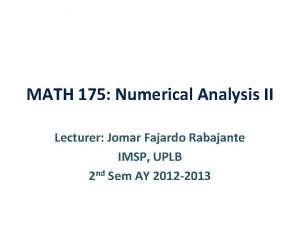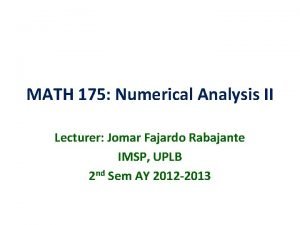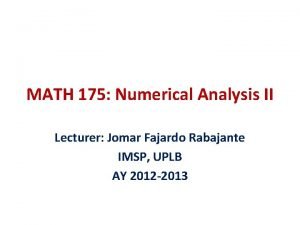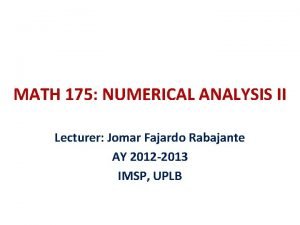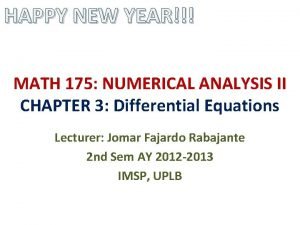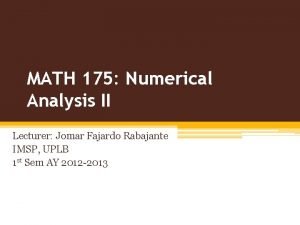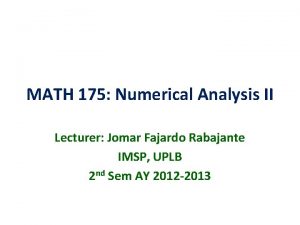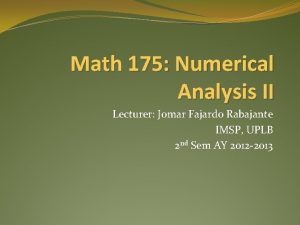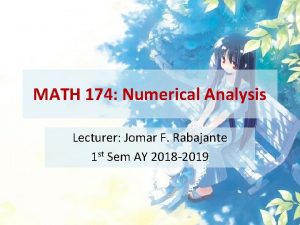MATH 175 NUMERICAL ANALYSIS II Lecturer Jomar Fajardo













- Slides: 13

MATH 175: NUMERICAL ANALYSIS II Lecturer: Jomar Fajardo Rabajante 2 nd Sem AY 2012 -2013 IMSP, UPLB

MULTISTEP METHODS • These are ODE solvers that have order as high as the one-step methods but with less necessary function evaluations. • Multistep methods can be generated using Taylor Series, or by integrating approximating interpolants (similar to what we did in Numerical Integration in Math 174).

Explicit Multistep Methods • Adams-Bashforth Two-Step Method (Order 2) We start the method using the initial value and using one-step method of at least same order (e. g. Trapezoidal Method)

Explicit Multistep Methods • Adams-Bashforth Three-Step Method (Order 3) • Adams-Bashforth Four-Step Method (Order 4)

Implicit Multistep Methods • Adams-Moulton Two-Step Method (Order 3) Use root-finding approach (if stiff), or the predictorcorrector approach (if non-stiff, e. g. partner Adams. Moulton and Adams-Bashforth methods) when dealing with the implicit part.

Implicit Multistep Methods • Milne-Simpson Method (Order 4) • Adams-Moulton Three-Step Method (Order 4)

Stability of Multistep Methods A general s-step method has the form

Stability of Multistep Methods DEFINITION: An s-step multistep method is stable if the roots of the characteristic polynomial are bounded by 1 in absolute value, and any roots of absolute value 1 are simple roots. A stable method for which 1 is the only root of absolute value 1 is called strongly stable; otherwise it is weakly stable.

Stability of Multistep Methods Example: Given the polynomial (from a general twostep formula) If the roots are 0 & 1, then strongly stable. If the roots are – 2 & 1, then not stable. If the roots are – 1 & 1, then weakly stable. If the root is 1 (multiplicity 2), then not stable.

Convergence of Multistep Methods THEOREM: A multistep method is convergent if and only if it is stable and consistent. Recall: A method is consistent if it has order at least 1.

Stability of Multistep Methods • All discussed Adams-Bashforth methods are strongly stable. • All discussed Adams-Moulton methods are strongly stable. • Milne-Simpson Method is weakly stable (i. e. it is susceptible to error magnification)



